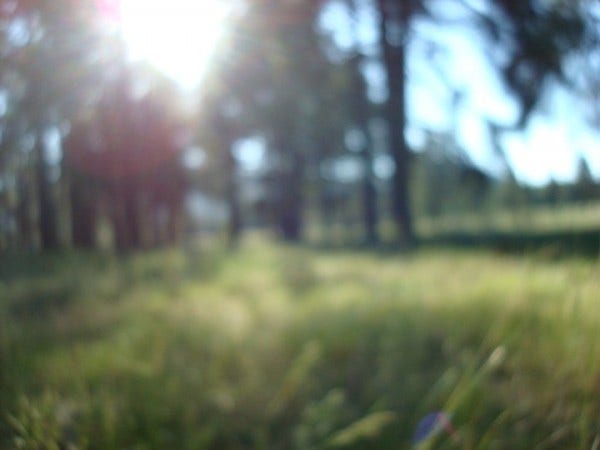
Why is it that as you scroll through those pics you spent time composing on holiday, so many of them are blurred and less than impressive?
If you just can’t figure out why your photos are turning out blurry, here are a few troubleshooting tips to help you out:
Focus
The most common reason for blurred images is that your subject is out of focus. Autofocus points in cameras usually hone in on the centre of your shot. So if your subject is to the side, it may not be in the camera’s focal point range and will turn out less sharp than you’d like.

(Image courtesy of jofish.com).
There’s an easy solution to that. If you’d like to focus on something off-centre, bring your subject to the middle of your shot. Press the shutter slightly to lock in the focus and move the camera back to your preferred position to take the shot.
Sometimes it’s best to override the autofocus and go manual if your camera allows it. For example, when you’re shooting in low light, your camera can have trouble interpreting subtle features. It can also get confused about the focus when you frame a picture with a window or attempt a creative shot through tree branches, for example. Manual focus in these occasions will give you much more control over your focus.
Motion blur
Another easy way to blur your photos is to snap away at moving objects, such as the pelican reaching for your picnic lunch.
If your shutter speed isn’t fast enough, your camera won’t freeze that perfect pelican shot.
The simplest solution here is to dial around to the Action mode on your camera. Action mode automatically locks focus on your subject and keeps it there no matter how restless those pelicans are.
It also picks the right settings – such as shutter speed – for you so you only need to try to keep up with your subject’s flighty movements.
If you’re a DIY type, focus on increasing your shutter speed when taking shots of moving subjects. Another option to avoiding motion blur is to focus your camera on a certain spot in front of the moving subject and wait for them to enter your view.
Camera shake
We know it’s hard but it’s important to hold the camera steady when you’re taking photos.
A lot goes into your stance. Keeping feet apart and elbows in helps you steady yourself before taking that perfect shot.
Using a prop to steady your arm can also help with camera shake. A boulder or a tree does the job well.
And of course, a camera tripod is a necessity if you’re seriously committed to capturing those sharp shots!
Tapping the shutter button can also cause camera shake, which is when a remote shutter release can come in handy. You can take the picture without going anywhere near your camera.
Blurring can also occur when the camera is in ‘night-time’ mode and the shutter speed is reduced. A tripod is your best friend here, it will help you avoid camera shake in reduced light.
Depth of field

(Image courtesy of PartyCactus).
Depth of field has to do with whether the whole of your photo is focused, or just a part of it. It’s controlled using aperture settings.
Be careful with these settings. Going too wide to get a shallow depth of field (for portrait photographs, for example) will lead to blurry edges in your pics.
If you want crisp landscape photos, you need a large depth of field and a low aperture to ensure both the foreground and the horizon are sharp.
If you’re very near your subject and want a close up shot, your depth of field will be tiny. The slightest movement will cause blurring. In this case, it’s safer to use a tripod if you want good clear pics.
Dirty or misted lens
It’s easy to get finger prints or greasy marks on your lens, causing a soft blurring. In a humid environment, your lens may mist up.
Check your lens periodically and keep it clean with the right accessories.
Recomposing Errors
Often when you’re taking a snap, you’ll half press the shutter for a while before finally deciding on the shot you want.
During this time, you or your subject may have shifted. Or the camera may have decided to re-set to continuous operation to accommodate your shifting around. Whichever is the case, your photos might end up blurred.
The easy solution here is just to avoid depressing the shutter until you’re sure of your shot!
If you’re looking for more tips to get the best shots with your new camera, make sure to check out more handy tips and hints on the Camera House blog.
